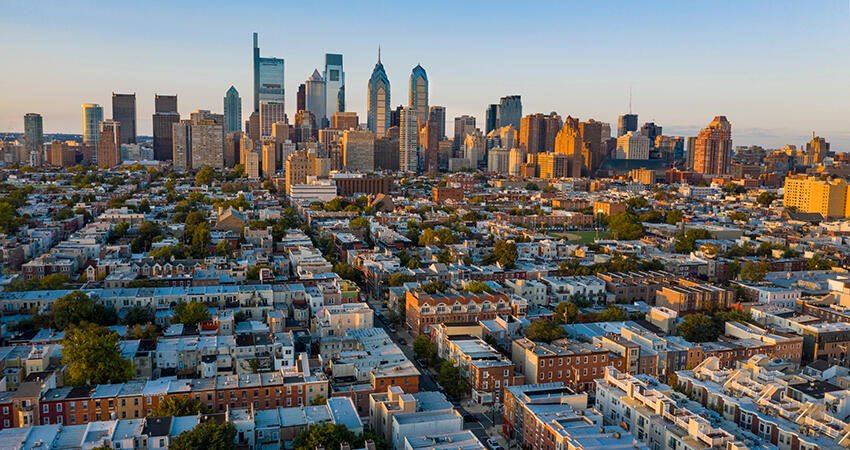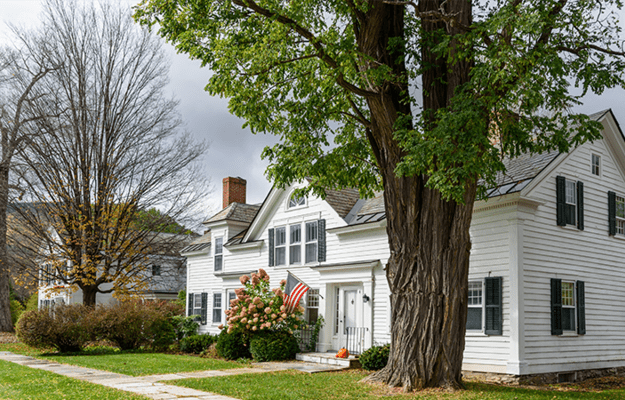
(Real Window Creative/Shutterstock)
How Black Homeownership in Philadelphia Has Changed over the Years
- Title:
-
What's Behind the Racial Homeownership Gap in Philadelphia?
- Author:
-
Jacob Whiton, Theresa Y. Singleton, & Lei Ding
- Source:
- Publication Date:
-
2021
Homeownership is widely viewed as one of the primary ways families build wealth in this country, but the racial homeownership gap has been persistently high for decades. Discriminatory housing policies and unique social, economic, and financial barriers are largely responsible for the racial homeownership gap.
In this brief, Philadelphia Federal Reserve authors use data from various publicly available data sources, including the US Census Bureau, American Community Survey, Integrated Public Use Microdata Series, and the Home Mortgage Disclosure Act, to explore how the Black homeownership rate has shifted over time in Philadelphia and discuss what factors have contributed to racial disparities in homeownership.
They find that although the homeownership gap in Philadelphia is smaller than in the US overall, Black homeownership in the city has steadily declined over the past 30 years, and the Black-white homeownership gap slightly widened.
Key findings
- In the 1960s, suburbanization and white flight resulted in a surplus of housing, which lowered prices and put homeownership within reach for many working-class households.
- Between 1960 and 1990, low home prices and the adoption of antidiscrimination laws in the housing market increased Black homeownership by 13 percentage points. It reached 57 percent and brought the housing gap between Black and white residents to within 10 percent.
- The 2007 housing market crash disproportionately affected Black homeowners, who were more likely than white homeowners to hold a subprime mortgage.
- After 2010, the Black homeownership rate fell below 50 percent for the first time since the 1970s and has since continued to decline.
- In 2019, the homeownership gap between Black and white households was slightly wider than it was 30 years ago.
- The racial homeownership gap is largest among residents with lower-middle incomes and those without a bachelor’s degree.
- The 80 percent of Black households without a four-year college degree were much less likely than their similarly educated white counterparts to own their own home.
- In the past two decades, median home values have increased from 2.5 times the median income of Black households to more than 5 times.
- Lack of access to mortgage credit is a key barrier to narrowing the Black-white homeownership gap in the city. In 2020, Black mortgage applicants were 2.7 times more likely to be denied by lenders than white applicants.
- Black applicants were much more likely than white applicants to be denied because of their credit history. Denials because of credit history accounted for 29 percent of denials for Black applicants compared with 16 percent for white applicants.
- Mortgage denial rates for Black applicants were significantly higher in previously redlined neighborhoods, and the racial gap in denial rates also tends to be larger in those neighborhoods, suggesting there is a persistent impact of historical discrimination.
- Mortgage denial rates for both white and Black applicants are higher among those attempting to acquire property in parts of the city with higher shares of Black residents.
Policy implications
- The authors suggest that Philadelphia policymakers and researchers interested in dismantling barriers to homeownership among Black residents should focus their efforts on the underlying factors, such as low and falling incomes, limited access to mortgage credit, and other historical and structural barriers, which keep homeownership out of reach.
- Confronting Philadelphia’s racial homeownership gap requires a mix of both short- and long-term interventions. The authors believe better-targeted policies at the federal, state, and local levels are needed, such as Fannie Mae’s decision to allow lenders to consider applicants’ rental payments in evaluating credit risk, which would likely disproportionately benefit Black borrowers with no or limited credit histories.


